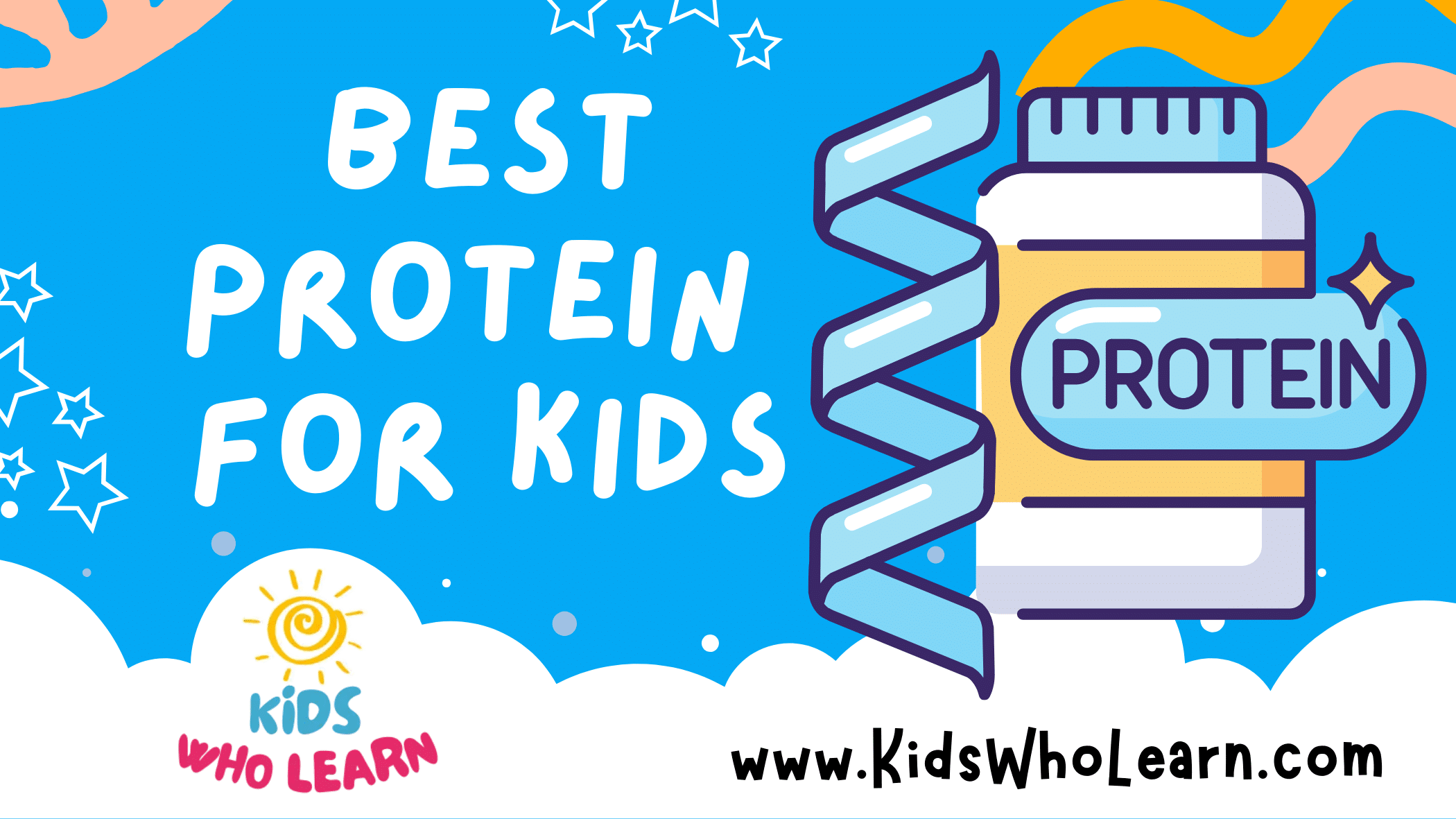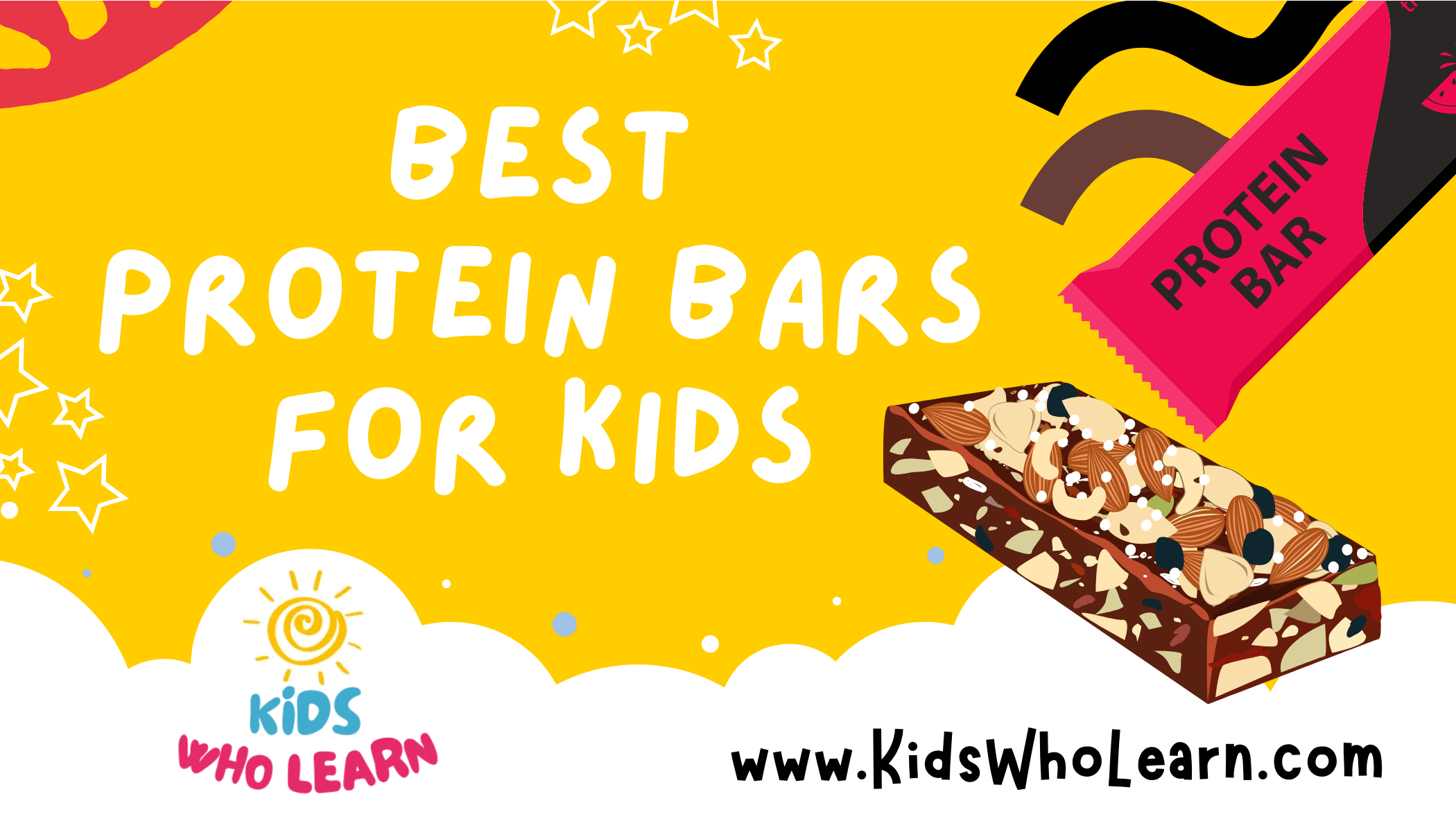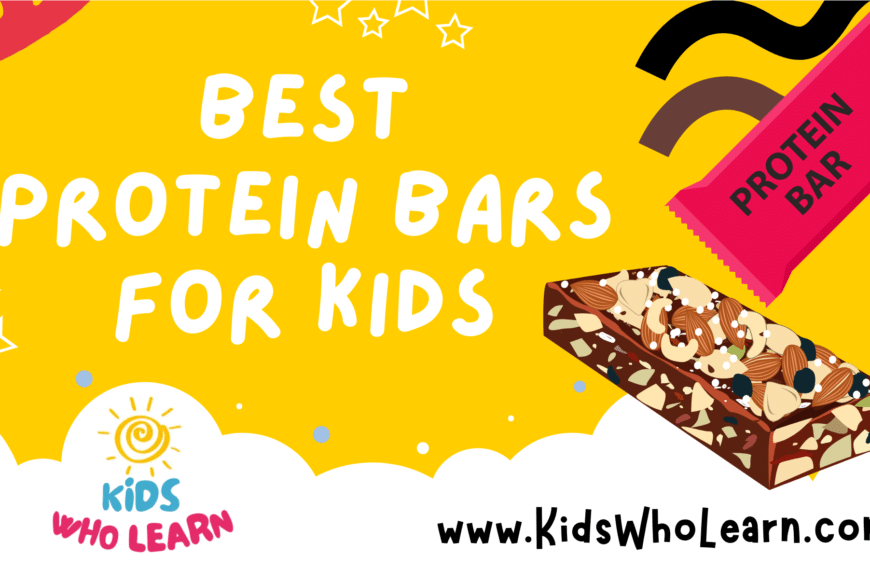Protein is a fundamental nutrient in any diet, but it plays a particularly crucial role in the growth and development of children. As the building blocks of life, proteins are necessary for the creation and repair of cells, making them a vital part of a child’s diet from infancy through adolescence. While adults might track their macronutrients for fitness goals, for kids, the right amount and type of protein supports their active lifestyles and developmental needs.
Understanding the importance of protein for children involves recognizing its role in various bodily functions, including the immune system, hormone production, and muscle development. However, not all proteins are created equal. High-quality proteins, which contain all the essential amino acids, should form the basis of your child’s protein intake. These can be found in a variety of animal and plant-based sources, which can be easily incorporated into meals and snacks that appeal to children’s often selective preferences.
It’s also critical to balance a child’s protein intake with other necessary nutrients to ensure a well-rounded diet. While protein supplements can be helpful, they are generally not necessary for healthy children who can meet their protein needs through regular foods. For children with specific health conditions or dietary needs, consulting a healthcare professional can guide appropriate protein intake.
Key Takeaways
- Protein is essential for a child’s growth, cell repair, and immune function.
- A variety of high-quality protein sources should be integrated into a child’s diet.
- Balance and dietary diversity are key to meeting a child’s nutritional needs.
Understanding Protein and Its Importance for Kids
Protein is crucial for your child’s growth, aiding in the development of muscles, bones, and more. It’s essential to ensure they receive the right amount for optimal health.
The Role of Protein in Children’s Development
Protein provides the building blocks, known as amino acids, your child’s body needs to grow and repair tissues. These building blocks are fundamental in forming muscles, bones, and other body structures. Adequate protein intake supports the immune system and is involved in hormonal and enzymatic activities that keep the body’s systems, including the heart, functioning properly.
Daily Protein Requirements by Age
Your child’s protein needs vary with age. The Dietary Guidelines for Americans outline these needs to help you understand how much protein your child should consume.
For children aged:
- 1-3 years: 13 grams of protein per day
- 4-8 years: 19 grams of protein per day
- 9-13 years: 34 grams of protein per day
- 14-18 years (boys): 52 grams of protein per day
- 14-18 years (girls): 46 grams of protein per day
Ensure your child’s diet includes a variety of protein sources to meet these requirements and provide all essential amino acids.
Sources of Protein for Kids
Protein is essential for your child’s growth and development. Ensuring your child receives adequate protein from a variety of sources is crucial for building and repairing tissues, and supporting a healthy immune system.
Animal-Based Protein Options
Meat: Beef, pork, and lamb are rich in protein and provide essential amino acids necessary for your child’s growth. Serve them in moderate portions to maintain a balanced diet.
Poultry: Chicken and turkey are excellent sources of lean protein. These meats are also rich in B vitamins and minerals such as zinc and iron.
Fish: Fish like salmon, tuna, and trout offer protein and are also high in omega-3 fatty acids, which are important for brain development.
| Dairy Products | Examples |
|---|---|
| Milk | Full-fat for younger children, reduced-fat for older kids |
| Eggs | Hard-boiled eggs, omelets, and scrambled are kid-friendly options |
| Cheese | Cottage cheese, string cheese, or cheese slices can be easy snacks |
Plant-Based Proteins and Their Benefits
Beans and Legumes: Kidney beans, lentils, chickpeas, and green peas are all good plant-based proteins. They are also high in fiber, which is beneficial for digestive health.
Nuts and Seeds: Almonds, peanuts, sunflower seeds, and flaxseeds are not only protein-rich but also contain healthy fats. Use them as snacks or sprinkle them on salads and cereals.
Whole Grains: Quinoa, brown rice, and whole wheat products contain more protein than refined grains. They also provide B vitamins and fiber.
Tofu and Plant-Based Options: Tofu, tempeh, and edamame are soy-based proteins that are versatile and can be included in a variety of dishes.
Incorporating a mix of animal and plant-based proteins can ensure your child gets a well-rounded intake of all necessary nutrients. Remember to tailor the portion sizes and protein sources to your child’s age, activity level, and dietary needs.
Incorporating Protein into Your Child’s Diet
Protein is essential for your child’s growth and development. It’s important to ensure that they receive a sufficient amount of high-quality protein at each meal.
High-Protein Foods for Breakfast
Starting your child’s day with a protein-rich breakfast can provide the energy they need for the morning activities.
- Greek Yogurt and Oatmeal: Serve Greek yogurt, which is high in protein and fiber, with oatmeal. Adding fruits can provide additional fiber and nutrients.
- Scrambled Eggs: Eggs are an excellent source of protein. Pair them with whole grain bread for added fiber and carbohydrates.
| Breakfast Option | Protein Source | Accompaniment |
|---|---|---|
| Greek Yogurt with Fruit | Greek yogurt | Berries, bananas |
| Oatmeal | Milk, nuts | Honey, cinnamon |
| Eggs on Toast | Eggs | Whole grain bread |
Healthy Protein Snacks for Kids
Snacks are a great way to maintain your child’s energy between meals and provide an extra dose of nutrients.
- Nuts and Nut Butters: Unsalted nuts and nut butters are rich in protein and good fats. Spread nut butter on whole grain bread or apple slices for a crunchy treat.
- Cheese: A small serving of cheese can offer protein and calcium. String cheese or cheese cubes are kid-friendly options.
Protein-Rich Meals for Lunch and Dinner
Lunch and dinner are opportunities to incorporate a variety of proteins into your child’s diet.
- Lean Meats, Chicken, and Fish: These should be a staple for lunch or dinner, providing high-quality protein. Combine with rice or pasta and vegetables for a balanced meal.
- Hummus and Whole Grains: Pair hummus, a protein-rich spread made from chickpeas, with whole grain bread or vegetable sticks for a fiber-packed meal.
| Meal Time | Protein Source | Side Items |
|---|---|---|
| Lunch | Chicken salad | Whole grain bread, lettuce |
| Dinner | Grilled fish | Brown rice, steamed broccoli |
Including a variety of protein sources and complementing them with fiber-rich foods like whole grains will contribute to a healthy, balanced diet for your child.
Special Considerations for Picky Eaters
Picky eaters may require specific strategies to meet their protein needs. Ensuring that they receive adequate nutrients through their preferred textures and flavors can help maintain a balanced diet.
Protein Options for Kids with Selective Appetites
For children who are selective about their food, incorporating protein into their diets can be a challenge. However, with some creativity, you can meet their protein intake requirements. Here are some protein-rich options that may appeal to picky eaters:
- Dairy: Cheese slices, yogurt, or milk can be both familiar and comforting.
- Grains: Grain products like whole grain pasta or rice can serve as a base for protein-rich toppings.
- Lean meats: Try turkey or chicken, which are often more easily accepted by picky eaters.
- Seafood: Fish sticks, which have a mild taste and pleasing texture, can be a good introduction to seafood.
- Legumes: Blended into soups or as a base for a dip, beans can be a non-threatening way to add protein.
- Eggs: Scrambled eggs or omelets can be paired with cheese or grains for a protein-rich meal.
- Nuts and seeds: For those without allergies, peanut butter on whole-grain bread can be a satisfying option.
Creative Ways to Introduce New Proteins
When you’re trying to introduce new proteins to a picky eater, it’s important to focus on presentation and familiarity. Bringing fun into mealtime can sometimes entice picky eaters to try new foods:
- Make Fun Shapes: Use cookie cutters to create interesting shapes with protein-rich sandwiches.
- Pair with Favorites: Combine new proteins with well-liked foods. For instance, mix a new protein into a favorite pasta dish.
- Use Dips: Many children enjoy dipping their foods. Offer a nutritious bean dip or hummus with vegetable sticks or whole-grain pita.
- Role-modeling: Eat the same proteins with your child to show that it’s both safe and delicious to try new foods.
- Preparation Variety: Present proteins in different forms: ground, sliced, or diced can make a big difference in a child’s willingness to try them.
- Involve Them: Let your child help in the kitchen. Kids may be more inclined to eat something they’ve helped prepare.
Remember, patience and persistence are key when dealing with a child’s selective appetite. Offering a variety of protein choices in a stress-free environment can eventually lead to a more diverse and balanced diet for your picky eater.
The Relationship Between Protein and Kid’s Health Conditions
Protein plays a crucial role in your child’s growth and overall health. It is vital for maintaining a healthy immune system and proper weight management. Specific protein sources can also influence allergies and addressing protein deficiency is key to a child’s development.
Weight Management and Protein
Your child’s weight can be influenced significantly by their protein intake. Protein-rich foods such as lean meats, eggs, and dairy products contribute to a feeling of fullness, which may help prevent overeating. A dietitian can guide you on incorporating healthy proteins to achieve or maintain a healthy weight for your child.
- Key Proteins for Weight Management:
- Lean meats: High in protein and low in fat.
- Diary products: Good for satiety and calcium intake.
- Nuts and seeds: Provide healthy fats and protein for energy balance.
Protein and Allergies
Allergies can be affected by different types of protein found in foods. For example, some children may be allergic to the proteins in nuts or dairy. Soy milk and other alternatives can provide essential amino acids without triggering allergies. Consult a pediatrician before making any significant changes to your child’s diet, especially if they have known allergies.
- Common Allergenic Proteins:
- Nuts
- Eggs
- Dairy products
- Alternatives: Soy milk, rice milk, hypoallergenic formulas.
Addressing Protein Deficiency
A protein deficiency can have serious implications for your child’s health, including stunted growth and a weakened immune system. Ensure your child consumes adequate amounts of protein daily; essential amino acids found in protein are crucial for tissue repair and growth. If you’re concerned about protein deficiency, a pediatrician can assess your child’s dietary needs and recommend appropriate interventions.
- Signs of Protein Deficiency:
- Slow growth
- Weight loss or failure to gain weight
- Frequent infections
- Sources to Enhance Protein Intake:
- Include a variety of protein sources: animal and plant-based.
- Consult with a pediatrician or a dietitian for tailored advice.
- Prioritize whole foods but consider fortified options if necessary.
Protein Supplements for Kids: Yay or Nay?
When considering protein supplements for kids, it’s crucial to choose products that are safe, nutritious, and appropriate for their growing bodies.
Navigating the World of Protein Powders
Protein powders for kids should be approached with caution. Dietitians typically suggest obtaining protein from whole food sources; however, in certain circumstances, a supplement may be needed. If you are exploring protein shakes or powders, select products designed specifically for children. These formulations consider the unique nutritional needs of kids and often include additional vitamins and minerals.
Selecting the Best Protein Powders for Kids:
- Check that the product meets USDA standards for organic ingredients to avoid exposure to GMOs and pesticides.
- Look for the term ‘organic’ on the label to ensure strict farming methods that limit the use of synthetic materials were followed.
- Protein powders for kids should be free from artificial colors, flavors, and preservatives that can be harmful to young ones.
- Aim for products with natural sweeteners like stevia instead of high amounts of sugar or artificial sweeteners.
- Consider powders with added probiotics to support a healthy gut.
- Review the product for any mention of third-party testing for heavy metals, a potential contaminant in some powders.
Understanding Supplement Labels
Reading labels on protein supplements is vital to ensure you’re providing a high-quality product to your child. Labels can contain a wealth of information about the ingredients and the nutritional value of the supplement. Be alert for the following:
Label Checklist:
- Ingredients: Keep an eye out for simple, recognizable ingredients and avoid those with a long list of unfamiliar additives.
- Nutritional Information: Verify that the serving size provides an appropriate amount of protein for a child’s dietary needs.
- Sugar Content: Look for low sugar content. Protein powders should not double as a sweet treat.
- Certifications: Organic, non-GMO, or other certifications can provide an additional layer of quality assurance.
Frequently Asked Questions
When selecting proteins for kids, especially athletes and those with higher nutritional needs, it’s essential to choose safe and health-promoting options. This section addresses common inquiries regarding protein sources and supplements suitable for children.
What types of protein are safe and healthy for athletes still in their childhood?
Your young athlete needs high-quality proteins that support growth and repair. Look for natural sources like lean meats, poultry, fish, dairy products, legumes, and nuts. These provide essential amino acids and other nutrients without the need for artificial supplements.
Which whey protein supplements are appropriate for young children?
Whey protein designed for children should be low in added sugars and artificial additives. Select whey protein supplements that are specifically formulated for kids, as these typically contain appropriate dosages for their developing bodies.
Can protein shakes help toddlers gain weight effectively and safely?
Yes, protein shakes can help toddlers gain weight if they’re made with wholesome ingredients and used under pediatric guidance. They should complement a well-rounded diet and never replace whole foods or meals.
What are some recommended protein shakes or supplements designed for children’s nutrition?
Choose child-friendly protein shakes that are fortified with vitamins and minerals, low in sugar, and free of artificial additives. Check the label for reputable brands that cater to pediatric nutrition.
How can I make homemade protein powder that is suitable for kids’ consumption?
To make homemade protein powder, blend ingredients such as powdered milk, oats, and seeds like hemp, chia, or flax. Ensure all ingredients are finely ground, and consult a nutritionist to verify that the homemade blend meets your child’s nutritional needs.
What should be considered when choosing protein powders for pre-teens and teenagers?
Focus on selecting protein powders with no added sugars or harmful substances. Teenagers have different nutritional requirements, so opt for powders that support their growth and are intended for their age group. It’s best to discuss with a healthcare provider before beginning any supplement regimen.











